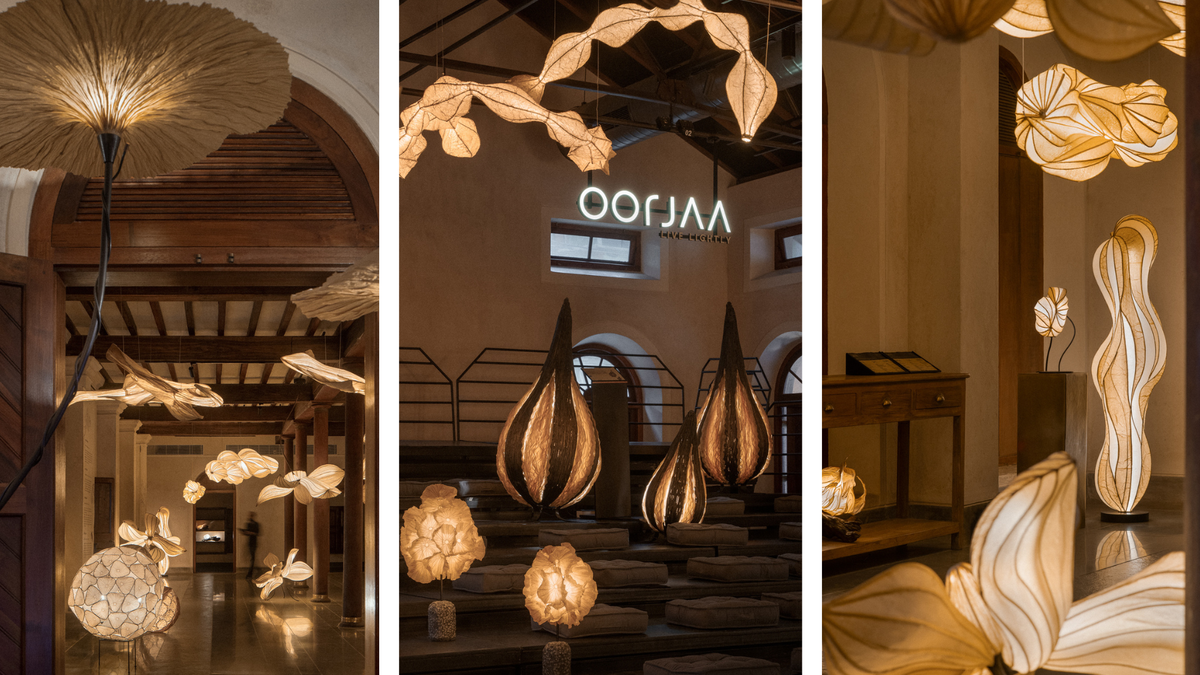Settling down in the café adjoining the buzzing courtyard of Sabha, Jenny Pinto looks slightly bemused. “We didn’t expect such a huge success,” the designer says candidly. “I’m quite overwhelmed by this.”
Part of the reason could be the venue. A beautifully reimagined and renovated space dating back to the late 19th century — in its last avatar, it was a school — the exhibition hall, the auditorium and the courtyard serve distinct functions yet tie in well together when Sabha hosts a major show, like the Shades of Green currently underway. But it’s more likely that the majority of the credit is due to Pinto herself: back in the 1990s, the city had taken her bright mind and innovative ideas under its wing, just as it would tech founders a decade later, and given her life a new direction by introducing her to handmade paper art. And as the tech sector would acknowledge, those that Bengaluru owns, it never lets go.
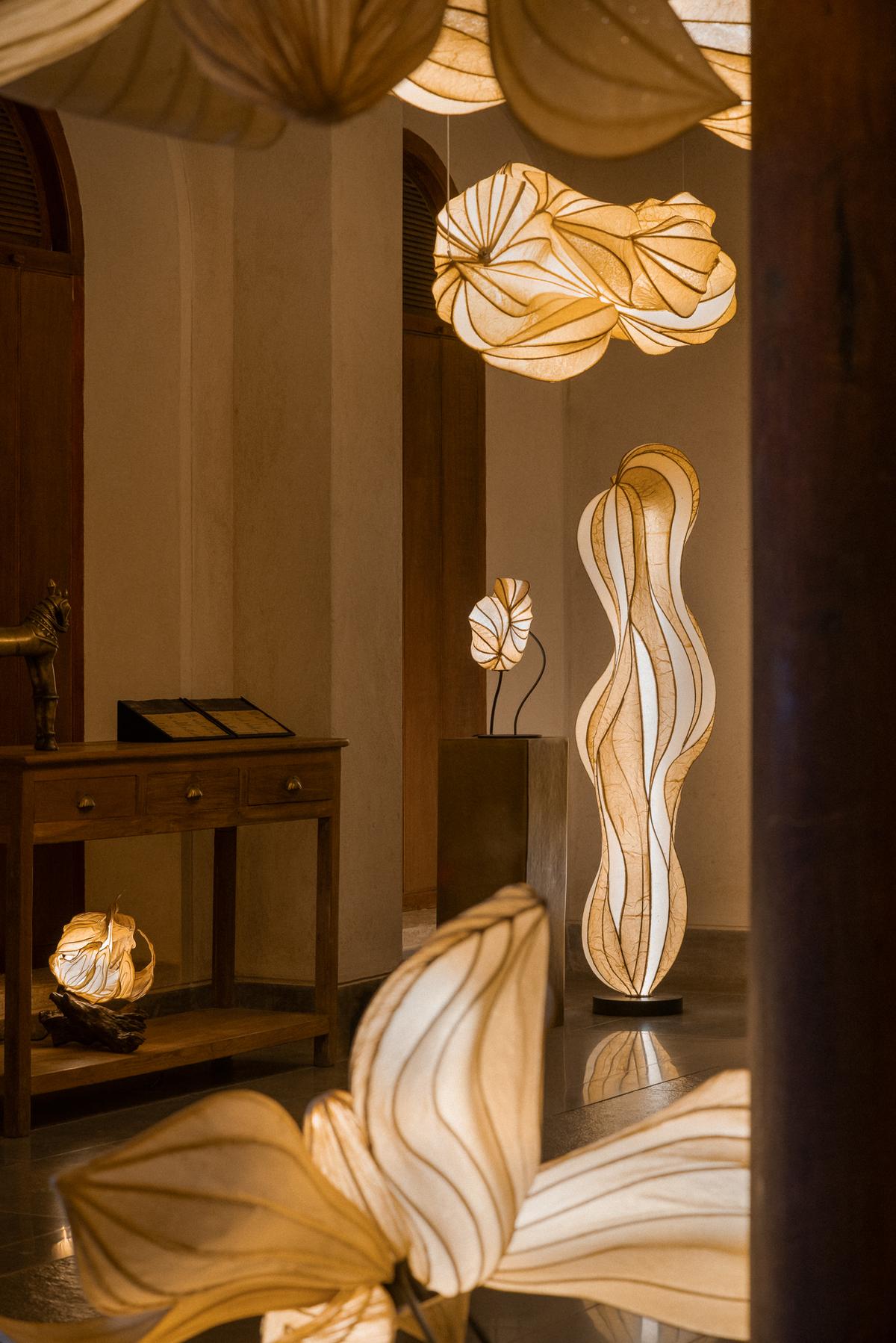
At the turn of the century, Pinto was possibly the sole such artist in India. Today, her team of 70 has put together Shades of Green, a multidimensional construct of “dialogue, discovery and design”, the highlight of which is undoubtedly her paper art light installations. The 52-piece exhibition is as wondrous and surreal as it is tactile and practical.
Surreal yet natural
Bathed in the warm glow and deep shadows of the lights — floor lamps shaped like a star anise plant or an Illawara flower, pendant lamps inspired by a falling flame of the forest or a still cloud, table lamps that look like something collected from the sea floor — design students, young children, and their parents move about as if in an enchanted land, touching the fine folds of the banana fibre, the hard nailed lantana bark, the suspended rings made of industrial waste.

Much of the design inspiration comes from Pinto’s book The Magical Everything (2024), written to introduce middle- and high-schoolers to the environmental and climate crisis threatening the world today. “My product design has always been abstract and organic,” says Pinto, “and that was the brief for this exhibition as well. About 20% of the designs are new — the gulmohars, the coral tree, the clouds — while the rest have been showcased elsewhere, though never before in Bengaluru.”
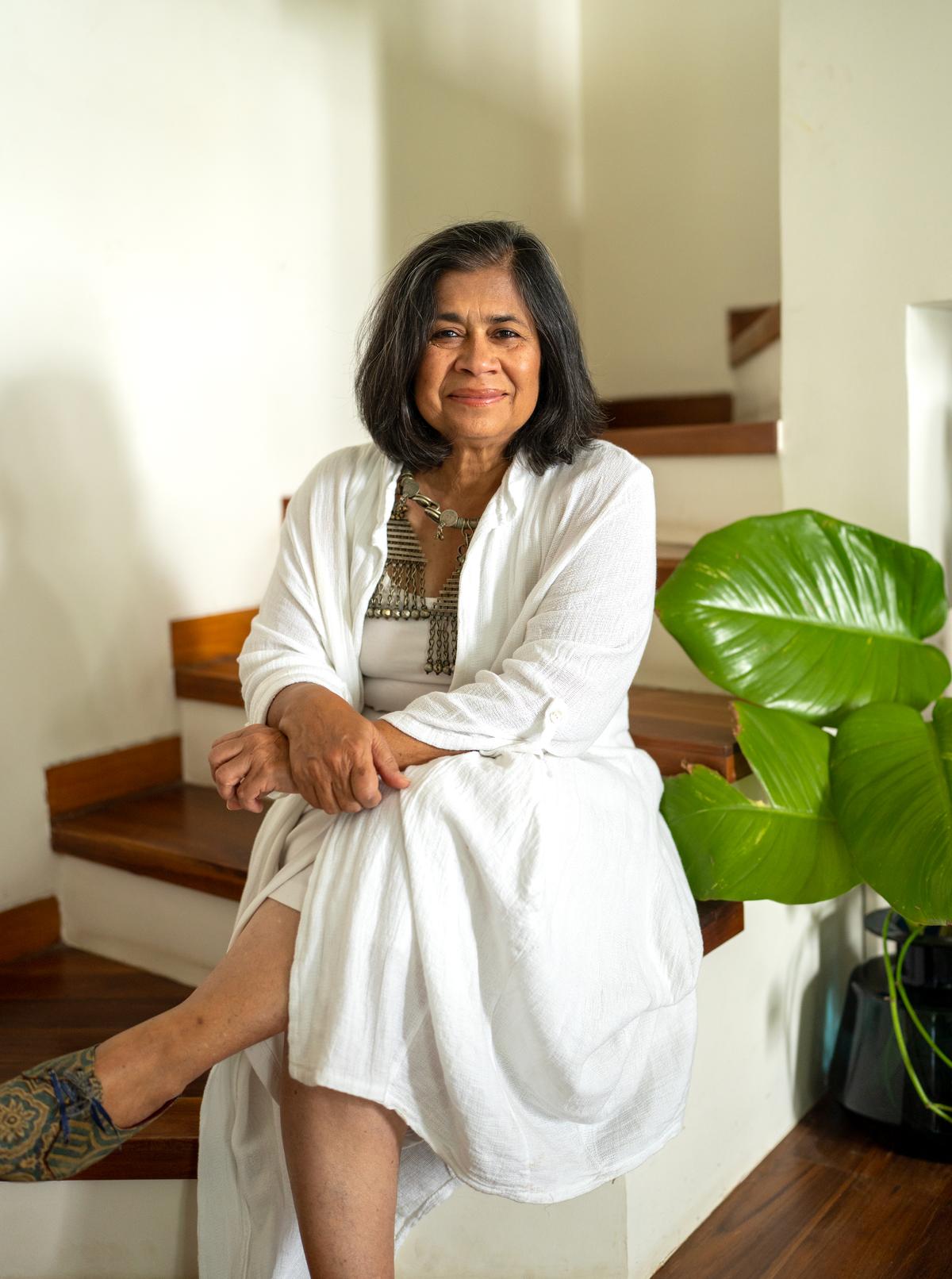
Jenny Pinto
Consider the giant Victoria water lilies, towering over visitors in a room leading off the main exhibition hall. Softly uplit right where the waste copper wire stem touches the core of the flower, crafted from banana fibre paper, it is a silently transportive work, taking the observer into the depths of the river for a rare glance at the underside of the leaf. The paper, carefully creased into a large uneven circular shape, is as organic as the plant it evokes. Or take the suspended clouds, a fascinating balance of opaque paper and netted translucence, that manage to capture the non-corporeality of a lazy summer sky. The creases that characterise the water lilies fade away to smoothness here, interspersed with a loosely woven version of the same material.
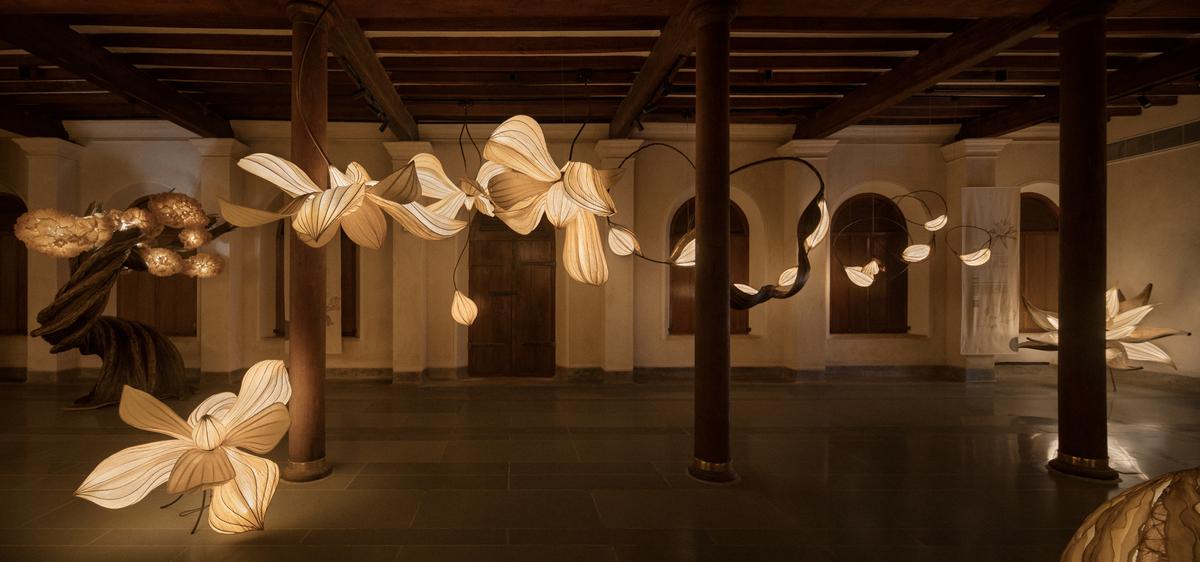
The early days
It is no coincidence that Pinto’s work simulates the natural world, using waste material to give back something beautiful and precious: her entire oeuvre, it could be said, is both a reaction and a response to the overconsumption and extravagance she witnessed — and admittedly encouraged, as part of the advertising industry in Mumbai in the years around liberalisation. Almost overnight, she says, she noticed trash build up in the city. And then, around the same time, she became a mother and “suddenly, the problems became personal”.
As part of her response, Pinto shut down her business producing and directing ad films, pulled up her roots in Mumbai and moved to what was still Bangalore and, perhaps most decisively, admitted her daughter at the J. Krishnamurthi-founded Valley School. The school offered her a kiln and a studio to work with — pottery was Pinto’s creative interest at this point — till, one day, she wandered into a paper-making workshop, and immediately fell in love.
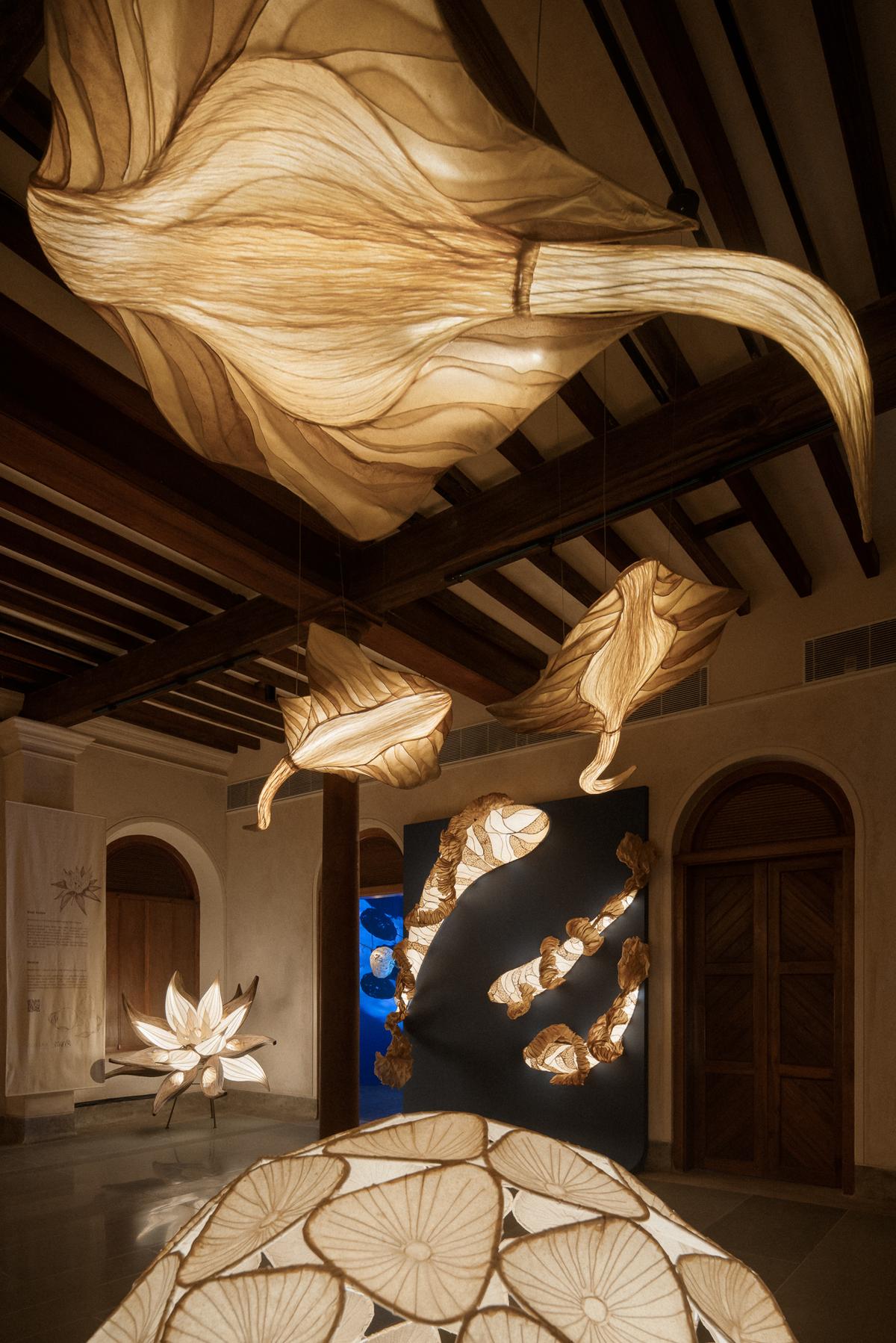
Starting with recycling waste paper and then working with abacá, a species of banana, in a three-month stint with U.S. papermaker Helen Heibert, Pinto came back to India to begin the arduous process of establishing suppliers for her art. “Only some banana fibre was used in rope-making etc, back then, the rest of it was mulched,” she recalls. “Today [demand for banana fibre has shot up so much], it’s an industry.”
Showing up for responsible creation
For the past two decades, Pinto has experimented with all kinds of invasive and renewable plants for her work, always mindful of sourcing, creating and producing to generate the least amount of waste. Besides banana fibre, which she is perhaps most well known for, she also works with cork, faux cement (made of stone quarry waste), lantana camara, water hyacinth (both invasive species), and banana bark yarn.
While Pinto had always produced her work for the market, a turning point came in 2013, when Radheesh Shetty of Bengaluru-based The Purple Turtles, her principal retailer, offered her a partnership. Together, they launched Oorja, a sustainable lighting brand. The enterprise brought scale to Pinto’s work, as the numbers swelled from about eight employees to the 70-odd today, including five designers.

For all her success today, though, Pinto believes Indian art has barely recognised the potential of waste-born paper for its materiality. That will be her next frontier, she promises, taking up education on circularity and ecology, in schools as well as for design students. She also plans to bring the Paper Biennale — a recurring exhibition of international artists — to India in 2027. The time has come, she thinks, to turn the page on responsible creation.
Shades of Green: A Week of Design, Dialogue and Material Stories is on at Sabha, Kamaraj Road, Bengaluru, till August 13.
The writer and editor is based in Bengaluru.
Published – August 12, 2025 07:00 pm IST








